
Restaurants want you to eat and drink as much as possible. To achieve this, they use the same tactics as all processed food companies – pile in salt, sugar and oil. It’s a common tactic. And we humans can find it really difficult to resist this sugary, salty, fatty combination, in spite of the hidden dangers. So what additional tips are there for those who need to eat out occasionally but don’t want to compromise their health?
As I mentioned in Part 1, you’d think that vegan restaurants would be the closest you would find to WFPB. But they are often as guilty of cooking with loads of oil, salt and sugar as mainstream outlets. If you want to have a look at the online menus or speak to the chefs of vegan (and vegetarian) restaurants, try the website called happycow.net that aims to provide a list of all the vegan and vegetarian restaurants in different cities around the world.
For my part, I tend to avoid most vegan eateries because they are usually over-priced and concentrate too much on trying to make the food fancy rather than wholesome – instead of a plateful of steamed veg, you get a single swirl of a oil-drenched carrot in the centre of a stylish plate accompanied by a plethora of rich sauces. I had yet another bad experience last night when I was persuaded to go out to a well-regarded “plant-based” restaurant. I had high hopes because the owner has written a book on plant-based cooking and is considered to be a bit of a guru. My disappointment was as high as the bill. I had to give part of my meal away to a friend because it was basically no different from the deep-fried offerings provided by the likes of McDonald’s or your local Chinese take away.
It’s sad to think that people might be regarding this stuff as what WFPB eating is all about – gravitating from one unhealthy way of eating to another. But let’s assume that you don’t have streets full of vegan restaurants – whether healthy or not – in your area. What you are pretty much guaranteed to have is lots of ethnic restaurants. It’s these we will look at now, as well as a few other well-known blood pressure raising emporia.
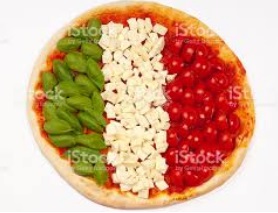 Italian (UK)
Italian (UK)
I’ve been generous to the processed white flour in pasta and pizza and marked it as orange. Opinions differ about whether white flours should be eaten at all. I avoid them completely at home but occasionally succumb while eating out if there are no other options.
- Plain Pasta (ideally wholemeal and NOT made with egg. Also ensure it isn’t prepared with butter)
- Marinara Sauce (a tomato, onion and garlic sauce. See if you can get them to make it without the oil)
- Olives
- Bread (ideally wholemeal)
- Bread with Olive Oil
- Bread sticks
- Tomato Bruschetta – Bruschetta al Pomodoro (diced tomato topping on top of a piece of crispy bread. Check that there’s no butter or cheese added and ask for it without added oil)
- Artichokes – Carciofo alla Romana (marinated/grilled artichokes. Check that it’s not been marinated in butter)
- Minestrone Soup – Minestra di Verdure (tomato-based soup often with beans, onions, celery, carrots, and other veggies, pasta or rice. ensure there’s no meat in it)
- Bean Soups (without the meat balls!)
- Caponata – Sicilian aubergine/eggplant dish (usually includes tomatoes, olives, onions, and capers fried in olive oil)
- Grilled Vegetables – Verdure Grigliate (often listed as side dishes, but can be combined as a meal if not drizzled with oil)
- Pasta with Tomato Sauce & Basil – Pasta al Pomodoro e Basilico
- Pasta with Hot Pepper & Garlic – Pasta Aglio e Olio (without the usual anchovies, of course!)
- Pasta alla puttanesca – (tomatoes, olive oil, anchovies, olives, capers and garlic)
- Pasta alla Norma (traditional Sicilian pasta dish that with aubergine/eggplant. Order it without the cheese)
- Pasta with Chickpeas – Pasta e Ceci
- Pizza with Tomato Sauce & Herbs – Pizza Rossa
- Pizza with Vegetables (ask for a pizza with tomato sauce and all the steamed/boiled/roasted vegetables they can cram on top of it)
- Mushroom stuffed raviolis
This is by no means a comprehensive list of what you get find at Italian restaurants – it depends on the restaurant itself. In my experience, I haven’t come across any Italian restaurants currently providing wholemeal alternatives.
********
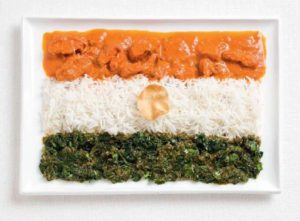 Indian* (UK)
Indian* (UK)
*This is a general definition, since there’s a wide range of different cuisines from different parts of the Indian subcontinent that are often grouped under the same “Indian” classification. Vegetable oils are regarded by many as a lesser evil than butter or animal fats. However, I avoid ALL oils when cooking at home. If I was dragged out to an Indian restaurant, I know it would be very difficult to eat anything without some oil.
If the restaurant uses ghee (clarified butter) instead of vegetable oils, then all fried dishes are off the menu unless they can guarantee you that they will use vegetable oil to make your curry.
You will need to watch out for paneer cheese, cream and yogurt. Double check with the waiter or chef beforehand to make sure these are not hidden in the meals. Naan bread is usually made with yogurt, as is raita.
You can always have a mixture of starters with plain boiled rice as your main course if you are unsure about the contents of the curries.
STARTERS
- Poppadoms & Chutneys (these are usually all vegan, but make sure the poppadoms are not cooked in ghee)
- Onion, Cauliflower and Okra Bhajis – deep fried
- Vegetable Samosas – deep fried
- Vegetable Pakoras – deep fried
SIDE DISHES
- Boiled rice (unfortunately, it’s almost always going to be polished white rice)
- Plain Chapatti (ensure they are not brushed with butter)
- Puri
- Rotti
- Saag Aloo
- Aloo Gobi
- Tarka Daal
- Daal
- Chana Saag
- Bombay Potato
MAINS
- Vegetarian Curries (a range of these are usually offered at most Indian restaurants. including – vegetable vindaloo, chana masala/chole (chickpea curry) sambar (lentil curry), vegetable biryani , vegetable balti)
Have a look at this Mary McDougall video. She gives some valuable opinions on Indian food, in particular, and on other eating out experiences, in general.
********
 Chinese (UK)
Chinese (UK)
I’ve marked most of the following as orange, since it really will be necessary to double check that animal products haven’t been slipped in to the meals. Also, there tends to be a lot of oil used in the cooking at Chinese restaurants.
The issue of MSG (monosodium glutamate) is an interesting one. Chinese food is well-known for adding lots of this chemical to their food in order to enhance flavour. There have been rumblings for decades about how dangerous this stuff is, but Dr Greger makes it pretty clear that he considers it to be harmless, since research has so far found no negative effects from its use. Your choice…
Fish and oyster sauce are used frequently in Chinese vegan recipes, so watch out for these. Also make sure that they don’t use animal fats in the preparation. Kung Pao is is a spicy, stir-fried Chinese dish made with peanuts, vegetables, and chilli peppers. Chicken is usually added, but you can ask for tofu instead.
- Tofu with Ginger and Spring Onion
- Tofu with Garlic and Black Bean
- Tofu with Satay Sauce
- Sweet and Sour Tofu
- Tofu with Cashew Nuts
- Tofu with Chilli/Hot & Spicy Tofu
- Tofu with Broccoli and Black Bean and/or Garlic
- Vegetable Chow Mein – check that no animal fat has been used
- Vegetable Chop Suey – check that no animal fat has been used
- Vegetable Spring Rolls – these will be deep fried
- Vegetable Steamed Dumplings
- Hot or Cold Noodles – without oil
- Salad with Ginger or Sesame Dressing – just ask for salad without the dressing
- Steamed/Boiled Rice
- Jasmine Rice
- Rice Noodles – careful they don’t think you mean egg noodles
- Steamed Vegetables
- Stir Fried Vegetables – again, ask to be dry fried, otherwise, check they are not fried in animal fat
I have to admit that I would be hesitant to eat in most Chinese restaurants unless I knew that they fully understand I wanted ZERO animal products/oils and that I want as little oil, salt and sugar as possible. I have marked many of the above in orange because I suspect it may be difficult to discover exactly what’s gone into making the dishes.
********
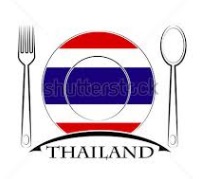 Thai (UK)
Thai (UK)
There is always a section of vegetarian dishes and most of the food is cooked to order, rather than prepared ahead of time, so you can order your food the way you like. Always insist on no animal products, no added oil and go for options that don’t have coconut milk, since it’s high in saturated fat and raises cholesterol. Thai restaurants don’t use a lot of dairy except in the drink Chai (usually with cow’s milk). You can always ask your waiter which dishes are best to make oil-free. Meat is not always the main feature of Thai food, so it’s easy to ask for it to be replaced with tofu, broccoli or a mix of vegetables.
Be careful with the spices, unless you are very familiar with Thai restaurants. They can be ferociously hot for those who accidentally order very or even medium spicy options. There’ll almost always be a chilli jar on your table if you want to add more to a milder dish.
APPETISERS
- Vegetable Spring Rolls – these are usually fried
- Sweet & Sour Sauce
- Sweet Chilli Sauce
- Peanut Sauce
- Lettuce Leaf Wraps (on which you pile mint, peanuts, onions, chopped lime, coconut, and/or tofu, which all come in separate bowls with a separate sweet and sour sauce)
- Grilled Tofu Satay – avoid the fried version
SOUPS & SALADS
- Hot and Sour Vegetable Soup
- Tom Yum Mushroom Soup
- Clear Vegetable Soup – usually made with cabbage, carrots, green onion and soft tofu
- Salads* – check there are no oils in the dressings (lime juice or soy sauce can be used instead)
- Green Papaya Salad or Som-Tam – made from unripe, green papaya, sliced into strings, and flavoured with Thai salad seasoning (order without oil if possible) and fresh Thai chillies (ensure you order it without the dried shrimp and fish sauce)
- Thai Mushroom Salad – fresh blanched mushrooms seasoned with the Thai salad lime dressing (check the oil content)
SIDES & MAINS
- Rice Noodles – ask for them with vegetables, mushrooms or tofu instead of meat, fish or egg
- Clear (or Glass) Noodles – made from mung beans
- Vegetarian Pad Thai – rice noodles, tofu, scallions, and bean sprouts (ask for it without the added oil)
- Other noodle dishes can be ordered with any combination of basil leaves, onions, tomatoes, bell peppers, carrots, broccoli, mushrooms, bamboo shoots, bean sprouts, scallions, watercress, celery, garlic, and/or cabbage, and mixed with a Thai spicy sauce
- Sautéed Aubergine/Eggplant with scallions, basil leaves and a bean sauce
- Sweet and sour vegetable & rice dishes, made with carrots, cauliflower, straw mushrooms and other assorted vegetables
- Steamed white rice is a staple in Thai dining and always cooked without oil – you are very unlikely to find a Thai restaurant serving wholegrain “brown” rice – but it is always worth asking
- Thai Curry – cooked with herbs, pepper and spices and eaten with rice (replace meat with tofu, and add extra vegetables and mushrooms. Ask if it can be cooked without coconut milk if possible)
- Fried Tofu Panang Curry – similar to red curry, but with a thicker sauce, Thai pea aubergine/eggplant and not as many vegetables
- Tofu Massaman Curry – made with onions and potato
- Green Curry with tofu – green chilli paste with bamboo shoots and mixed vegetables
- Stir Fried Spicy Basil Mushrooms – ask for no oil in the stir fries
- Stir Fried Ginger Tofu & Ginger Mushrooms – ask for no oil in the stir fries
- Sir Fried Cashew Tofu – ask for no oil in the stir fries
- Stir Fried Mixed Vegetables – ask for no oil in the stir fries
DESSERTS
- Mango-sticky rice
- Black rice pudding
- Fried bananas
- Banana spring rolls
Fish sauce is used a lot in Thai food. A replacement can be soy sauce or oyster sauce. I will always mark the latter sauces in red simply because of the high salt content with soy sauce and the fish content of oyster sauce. There are low-salt and non-fish varieties, respectively, but you are highly unlikely to be offered these alternatives at any restaurant. You could always make and take a container of Dr Greger’s Umami Sauce and add it yourself, having asked for the meal without any sauces.
Eggs can be included in some dishes (e.g. Pad Thai). You can order this without any animal products in it. Avoid Wonton skins and yellow noodles since they will contain eggs. Always specify rice noodles with your order.
There’s additional general advice on eating Thai (with specific references to some US Thai restaurants) from Mary & John McDougall here.
********
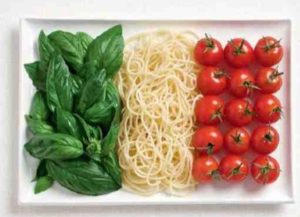 Mexican (UK)
Mexican (UK)
Traditional Mexican foods are one of the most plant-friendly of all national menus. However, you need to be careful.
The corn tortilla chips are deep-fried to make them crispy and they are usually swimming in oil when served. Ask your waiter for some soft corn tortillas instead. You could even plan ahead and take your own non-fat tortilla chips from home.
When ordering meals with beans, always ask whole beans. Why? I will let Mary & John McDougall explain: “In the Mexican restaurant, the cook starts the day with dry beans, which he boils until soft. Then he mashes the whole, cooked beans in a frying pan and stirs in some kind of fat – usually either vegetable oil (vegetarian) or lard or pig fat. This is most commonly done to the pinto beans – black beans are usually left whole. Now that you understand the cooking process, you know that at some time during the day there were beans in that restaurant just the way you like them – whole, cooked without added fat. Now all you have to do is ask your waiter, “Do you have whole beans?” Most likely there will be a pot of whole, cooked beans simmering back in the kitchen just waiting for your order. If that is not the case, then you should think about finding another restaurant.” I would advise you to call ahead and check whether they have mashed beans that have been prepared without any animal fats. Also, check whether they have whole beans on site that can be substituted for any refried beans or those that have animal fats added.
Mary & John McDougall explain the issues connected with eating at Mexican restaurant in such a clear way that I will let them continue in their own words: “Ask them to make you a bean burrito, with whole beans, lettuce, tomatoes and salsa – add some vegetables and/or rice, if they are healthy. Don’t forget to scream at your waiter “no cheese and no sour cream!”…if you want to avoid all added fat, then simply ask for some soft corn tortillas (they are almost always fat-free). Then order as side dishes: whole beans, lettuce, tomatoes, and salsa – and make your own soft taco at your table… Guacamole is also an option, but remember avocado has quite a bit of natural vegetable fat in it – not so good if you are trying to lose weight or regain lost health.”
The vegetables and rice are also not so simple. Ask for vegetables to be cooked on a dry griddle with little or no oil brushed on top – and certainly no animal oils. Rice can often be cooked in chicken broth – check before you order.
The following are marked as green in the understanding that the above “issues” have been satisfactorily resolved.
- Tortilla Chips with Guacamole & Salsa – try to get chips without added oil ensure there is no sour cream
- Nachos with Veggie Chilli and/or Refried Beans – no cheese or sour cream
- Corn on the Cob – no butter
- Spiced Rice & Garlic
- Flat Breads – check that they’re not prepared using butter
- Vegetable Enchiladas – check that there is no cheese or sour cream in this and the following
- Vegetable Tacos
- Vegetable Burritos
- Vegetable Quesadillas
- Bowl of Grilled Veggies and Whole Beans
This is some additional advice from Mary & John McDougall about Mexican food .
The following is the vegan menu from one example of a Mexican restaurant (Mesitizo in London) which has carefully itemised the vegan options. Of course, non-SOS WFPB is not the same as vegan, so you will have to use your skills to establish which menu items are green light, which orange light options need to be altered in order to get rid of the oil, salt and sugar, and which are no-go red options.
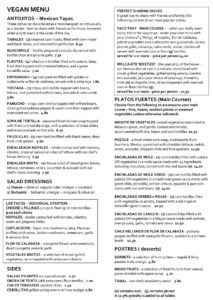
********
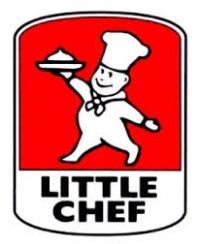 Little Chef (UK)
Little Chef (UK)
Little Chef is very limited in its plant-based choices. There are some items (usually fried to death, unfortunately!) that you could ask to combine into a meal.
- Hash browns
- Mushrooms (ask to be grilled)
- Fried potatoes
- Baked Beans on Toast (ask for wholemeal and without butter)
- Grilled tomatoes
- Jacket Potato (without butter) with Beans and/or Salad
- Simple Salad (without oil)
- Chips/Fries
- Mixed Veg (ask if they can be grilled or boiled)
- Fruits – might be available depending on outlet
********
Get Dressed and Milked-Up
* A good idea when eating out is to bring a small sealed container with your own home made salad dressing – see here for Dr Greger’s Ranch Dressing. Thousand Island Dressing. For other Dr Greger salad dressings, buy his How Not To Die Cookbook and look for the Goddess Dressing, Ginger-Sesame Orange Dressing, Garlic Caesar Dressing, Strawberry Balsamic Dressing. You couldn’t invest your money in a more worthy book (IMHO).
If you like your tea or coffee with milk, it’s also worth taking a small sealed container of your preferred unsweetened plant-milk with you whenever you go out on a journey or to eat. You can then order black beverages without fuss and add your milk at your leisure.
********
While on a long journey – motorway service stations
The big UK players in this sector, such as Roadchef and Welcome Break, tend to outsource their food and drink provision to the likes of Burger King, McDonald’s, Costa etc. And these have been mostly covered individually already. You will generally find a cut-down version of a supermarket, such as M&S or Waitrose, at motorway service stations. Vegan or WFPB options available at supermarkets will be covered in another blog; but suffice to say, there’ll be fruit, nuts and, if you’re lucky, a couple of reasonably healthy sandwiches (but they usually contain white flour and, in the case of wraps, often dairy as well).
A safer option is to go with handy containers filled with optimally nutritious food you prepared back at home, such as:
- fresh fruit
- cut-up vegetables with/without a dip
- salads
- oil-free hummus sandwiches
- falafels, burgers, etc – see here for a small selection of possibilities
- easily transportable desserts like flapjacks or muffins – see here
- dried fruit
- nut & seed mix
Always knowing that you’ve packed a hamper full of delicious snacks will keep you from stopping for sweet and fatty snacks.
Home is best…until the world catches up with us!
As stated in Part 1, we have to face the fact that when we decide to eat a WFPB non-SOS diet, the modern world is a largely hostile and alien place in terms of food. This applies even more when you are eating out.
For people used to eating out a lot, the reality is that you are they are going to have to change their habits when eating out.
If a person dines out for pleasure, then this is a somewhat easier issue to remedy by increasing the amount of eating and entertaining that’s done at home.
If a person dines out for necessity (because of the nature of the work they do), then the best option is probably a combination of taking prepared food with them and choosing their eateries and meals with great care.
Nobody said it would be easy…
In the modern world, it’s not easy being WFPB non-SOS – which is one big step beyond being a vegan.
For an interesting overview on how Big Food has hooked us all to salt, sugar and fat, have a look at Michael Moss’s book “Salt Sugar Fat – How The Food Giants Hooked Us“.
As you will have seen from the foregoing, it’s not totally impossible to eat in a restaurant and eat a healthy plant-based dish. We just have to remember that most dishes will be loaded with salt, oil and/or sugar and animal products (especially dairy and eggs) get included in recipes without a second thought in many cases. Research. Plan ahead. Ask questions. And be ready to eating nothing at all if there is really nothing available for you to eat.
It’s your body and your choice. Keep positive. You are the lucky one who is day by day, meal by meal ensuring that your diet is optimally helping you to live a long, productive and happy life.